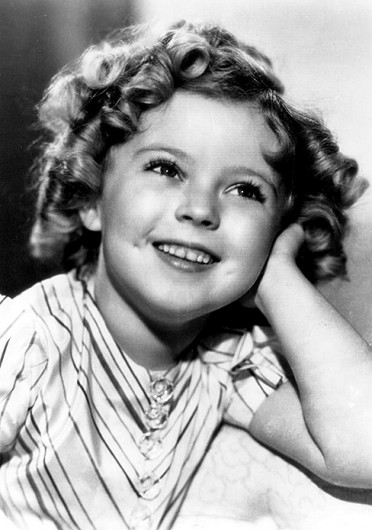
Shirley Temple Black, shown here in 1935, died Feb. 10 in her home in Woodside, Calif. She was 85.
Credit: Courtesy of MCT
America lost its curly-haired sweetheart, Shirley Temple Black, late Monday evening. Not everyone might realize that the iconic child star was not just an acting, singing and dancing phenomenon, but also a mother, cancer survivor and an important American diplomat.
From her skilled tap dancing to her adorable songs about animal crackers and lollipops, Temple was one of the best-known child movie stars of her time and beyond.
The little girl was the top box-office star during the Great Depression, earning more money and popularity than Bing Crosby. According to CNN, in 1937 Temple was among the highest paid actresses, earning an unheard of amount of $307,000, which translates to almost $5 million today.
Temple began her career at age 3, after being trained by her mother Gertrude Temple, who had dreamed of her daughter becoming a movie star.
Gertrude Temple taught Shirley Temple how to sing by serenading her daughter in the baby’s crib. Shirley Temple’s mother enrolled her at the famed Ethel Meglin’s dance school, where Shirley Temple perfected her unbelievable talent for dance and even danced alongside Judy Garland, who was 9 years old at the time and is best known for her roll as Dorothy in “The Wizard of Oz.”
The little girl with the contagious spirit who spurred fan clubs and look-a-like dolls made more than 50 movies during her career. As an adult, Shirley Temple was awarded a Kennedy Center Honor in 1998 as well as a Lifetime Achievement Award from the Screen Actors Guild in 2006.
Temple’s fame followed her into early adulthood until she decided to step out of the spotlight and live a normal life. However, her life past her child stardom was just as impressive.
At age 17, Shirley Temple married serviceman John Agar, and had her first daughter, Linda Susan Agar. Shirley Temple divorced Agar four years later and married businessman Charles Black. Shirley remained married to Black, and the couple had two children, Charles Alden Black Jr. and Lori Alden Black.
After Shirley Temple and her husband moved to Washington, D.C., for his career, she became interested and active in Republican politics.
Temple campaigned for Richard Nixon in 1968 and earned an appointment to the U.S. delegation in the United Nations from 1969 to 1974.
In 1972, Shirley Temple bravely battled breast cancer and was open about her cancer with the public. Shirley Temple had a mastectomy that she later spoke and wrote about in women’s magazine, “McCall’s Magazine.”
President Gerald R. Ford appointed Temple to become the U.S. ambassador to Ghana in 1974. She found so much success in her political career that she was promoted to the chief of protocol under President George H.W. Bush.
In her final political appointment, Shirley Temple served as the U.S. ambassador to Czechoslovakia during Bush’s presidency and the fall of communism in Eastern Europe.
After highlighting the numerous impressive facets of Shirley Temple’s life, it is only fitting that she has been a recognized American icon for more than eight decades.
Her infectious love of performing, country and her family illuminate her love that lives on today. As Shirley Temple once said, “There is nothing like real love. Nothing.”


